Table of contents
There is the curly leaf parsley ( Petroselinum crispum var. crispum) described here, the flat-leaf parsley ( Petroselinum crispum var. neapolitanum) and the root parsley ( Petroselinum crispum var. tuberosum). All of them have the technical name true parsley. 7 The flat-leaf parsley ( Petroselinum crispum var. latifolium) is discussed rather rarely.
Use in the kitchen:
Fresh parsley is highly valued in Central Europe and beyond as a seasoning and as a garnish. 1 All parts of the parsley plant have a strong, spicy-bitter aroma, although the often less noticed stems are particularly aromatic. The taproot of the parsley (parsley root) has the strongest parsley aroma. 9
Flat-leaf parsley is considered to be spicier than curly-leaf parsley, and root parsley is considered to have the strongest flavor. 2 Curly-leaf parsley is still the most common in northern latitudes. But what does parsley smell like? The leaves and stems have an aromatic scent, but the smell is difficult to describe.
Chopped parsley refines many cold dishes, is a component of various salad dressings, green sauce, pesto and North African grain salads. For example, tabouleh (tabbouleh or taboulé) from Lebanese cuisine. Two examples of tabouleh: tabouleh made from pomegranate seeds and apples and cauliflower tabouleh with tomatoes, olives and herbs. Mint is also used with semolina. Parsley is mainly used in Mediterranean cuisine.
Preparation: To preserve the valuable ingredients of parsley as much as possible, sprinkle chopped parsley over a warm dish at the end, e.g. soups, potatoes, etc. In France and Italy, parsley is often added at the beginning of the cooking time to add flavor, e.g. in soups, tomato sauces and vegetable dishes. Parsley is also cooked and pureed to make soup.
As a herb, parsley leaves should be used raw or only briefly heated, otherwise they lose their typical aroma. 5 Nevertheless, parsley is not only cooked briefly as a bouquet garni (e.g. with sage, bay leaves, thyme and rosemary) in French cuisine, but is also added at the beginning of the cooking time. It then gives broths and sauces a spicy basic taste. Cooked parsley can intensify the taste of other herbs and ingredients. 9
Parsley has recently become a part of “soul food”. Parsley is mixed with fresh ingredients such as vegetables and fruit to make delicious and healthy “smoothies”. The thin, brownish-yellow root parsley can also be used to make fine dishes. These include grated raw vegetable salads, delicate soups (also soup greens) and tender vegetables. Its leaves are used like chopped parsley. 2
Parsley is also an ingredient in green sauce, both in the Frankfurt and Kassel recipes. This is one of the typical dishes of German regional cuisine, which is particularly popular in the Hessian region.
Recipes for smoothie with parsley and root parsley:
- You can add a touch of flavor to various smoothies with fresh parsley. A simple basic recipe consists of an apple or pear, a banana, about 100 ml of water and half a bunch of parsley. All of the ingredients are processed into a homogenous, thick drink using a high-performance blender or smoothie maker.
- Another delicious, fruity smoothie variation with parsley is a mixture of an orange, a nectarine, a lemon, half a bunch of parsley and 100 ml of water.
- You can create a nutrient-rich green smoothie using a few leaves of kale, half a bunch of parsley, a small piece of root parsley, a juiced orange, a banana, a tablespoon of ground flaxseed and a little water. Each of these recipe suggestions will make a large glass of smoothie.
Recipe for parsley root soup:
Creamy parsley root soup is not only delicious on cold winter days! To make it, gently sauté around 500 g of chopped parsley roots, leek rings from a small leek, a piece of apple and cubes of two medium-sized potatoes together with a chopped onion. Deglaze with a litre of vegetable stock and season with nutmeg, pepper, paprika and bay leaves. After simmering for around 20 minutes, remove the bay leaves and puree the soup with a hand blender until smooth. Refine as desired with vegan sour cream and finely chopped fresh parsley leaves. The soup is for four people.
| Not only vegans or vegetarians should read this: Vegans often eat unhealthily. Avoidable nutritional errors. |
Shopping - where to buy?
Chopped parsley is available on the market in a pot, as a whole bunch, freshly chopped, freeze-dried or air-dried. Dried products are less aromatic, but regain their strength after a short water bath. A bunch of fresh parsley usually weighs around 30 g when opened, but pre-packaged at major retailers such as Coop, Migros, Denner, Volg, Spar, Aldi, Lidl, Rewe, Edeka, Hofer etc. it is more likely to weigh only 20 g. Buy parsley in organic markets, at the weekly market, directly from the farmer or as a subscription box and make sure it is organic.
By the way: The dried herb mixture " Herbs of Provence " usually always contains thyme, rosemary, oregano and savory. Lovage, parsley and sage are less common in the popular mixture. Lavender flowers, marjoram, basil, tarragon, fennel seeds, chervil, bay leaves or juniper berries are more common.
Found in the wild:
Wild parsley can still be found in the Mediterranean region and on the Canary Islands. 5 Locals use root parsley in particular to prepare soups made from "wild parsley".
Storage:
Wrapped in damp kitchen paper and stored in a plastic bag, parsley will stay fresh for about a week in the vegetable compartment of the refrigerator, and for about 6 months in the freezer. Storing in the freezer is ideal without any loss of flavor, which occurs when drying. Root parsley can be "wrapped" (trapped) like carrots at about 2 degrees and stored for a long time. Statement from Lis Bachmann : Herbs smell and taste best when used fresh.
Ingredients - nutritional value - calories:
The leaves and roots of parsley have the same ingredients, but vary in quantity. What vitamins are in parsley? Fresh parsley contains a high proportion of vitamin K, namely a minimum of 360 and a maximum of 548 µg/100g, which corresponds to an average of 454 µg/100g (USDA28 erroneously shows 1,640 µg/100g). This means that 10-20 g of parsley covers the entire daily requirement of vitamin K. Only amaranth leaves (1,140), chard (830), dandelion (778) and kale (704) have more of it. Garden cress, nettle, baby spinach, spinach and collard greens are in the same league.
The vitamin C content is also quite high (133-160 mg/100g): a good three times as much as in citrus fruits (50 mg/100g) or strawberries (59 mg/100g), but people eat very little parsley, so it doesn't count towards their daily requirement. Of course, there is also vitamin A and beta-carotene, but not more than is usual in vegetables.
It is worth mentioning the relatively high amount of the mineral iron (6.2 mg/100g). In addition, there are the usual elements potassium, calcium, copper and magnesium. On the other hand, parsley contains little zinc, manganese and phosphorus. See the detailed nutrient tables below. 13
Flat-leaf parsley contains the highest content of essential oils, especially apiol and myristicin (curly parsley contains myristicin and root parsley contains apiol). 3 The fruits of curly parsley have the highest content of essential oils (apiol and myristicin) as well as flavone glycosides (apiin) and furocoumarins. 11
In addition to essential oils, parsley contains very small amounts of polyine and the root contains the furanocoumarins (coumarins) bergapten and isoimperatorin. 5 Secondary plant substances are also important, eg flavonoids: apigenin (flavone-apigenin) and coumarins.
Parsley is considered to be very healthy, but we think the term superfood is exaggerated. Almost every food, whether healthy or unhealthy, is now being labelled as superfood.
The seeds of parsley are particularly rich in parsley camphor.
Health aspects - effects:
Why is parsley so healthy? Parsley has cleansing, disinfecting, diuretic, antispasmodic and expectorant properties. Thanks to its diuretic properties, parsley can provide relief from urinary tract diseases (cystitis, prostatitis, kidney stones). 11,12 It is used in the treatment of gout, digestive disorders, high blood pressure, bad breath, especially garlic breath, and skin diseases. In addition to relieving menstrual cramps, parsley can also promote milk production and uterine contraction after childbirth. 12 Applied externally, a parsley infusion can help relieve insect bites.
Wikipedia : The essential oil causes a strong excretion of urine, mainly due to the irritating effect of the phenylpropanes on the renal parenchyma. In higher doses, however, apiol produces an increased contractility of the smooth muscles of the intestine, bladder and especially the uterus.
Dangers - Intolerances - Side effects:
Excessive consumption of the small, green-brown, sickle-shaped parsley seeds with their light furrows, as well as the fresh leaves and stems, should be avoided, as they contain the potentially poisonous apiol. However, the amounts given in recipes are harmless. Parsley can only have a toxic effect if consumed in excess due to its essential oils. 9,12
The maximum is never the optimum! According to Wikipedia, high doses of apiol can lead to kidney and liver damage and cause allergic reactions. 10 The fruits of parsley have a contracting effect on the uterus, which is why they should be avoided if you are pregnant. In addition, the furocoumarins contained in the plant can cause skin irritation when exposed to sunlight. 11 Nerve inflammation and bleeding in the gastrointestinal tract can also be the result of an overdose. If you are pregnant or have kidney disease, you should definitely not eat parsley seeds. 12 For the same reason, pregnant women should never eat parsley from plants that have finished flowering, as the apiol content is then very concentrated in the entire plant. 15
Use as a medicinal plant:
Parsley has been known as a spice and medicinal plant for over 2000 years. The Romans brought it to Central Europe and at the end of the 7th century Charlemagne ordered its cultivation. Wikipedia : The dried and ripe fruits are used as medicinal drugs: Petroselini fructus and the fresh whole plant, Petroselinum (HAB).
Researchers at the University of Missouri published a study in mice in 2012 showing that apigenin from parsley (and celery) may be effective against human breast cancer cells. The conclusion was: "We don't know exactly how apigenin does this at a chemical level," Hyder said. "We know that apigenin slowed the progression of human breast cancer cells in three ways: by inducing cell death, inhibiting cell proliferation and reducing the expression of a gene associated with cancer growth. Blood vessels responsible for feeding cancer cells also had smaller diameters in apigenin-treated mice compared to untreated mice. Smaller vessels mean limited nutrient flow to the tumors and may have helped starve the cancer and limit its ability to spread. But since there is no known target in the cancer cell, this animal study is likely to remain for a long time (University of Missouri News Bureau). 18
Folk medicine - naturopathy:
Naturopathy uses parsley seeds dried and fresh and as a tincture. However, this can lead to cardiac arrhythmia.
Occurrence - Origin:
Parsley originally only grew in Morocco, Algeria, Tunisia and Jordan. 14 Now it is also widely used in Central Europe, the Caucasus, the Arabian Peninsula, Iran, Russia, India and North America 6. In cold areas, winter protection may be necessary. 6,12 In contrast to the Mediterranean, wild parsley plants there, especially in rubble weed fields (rubbish dumps) 11, are most likely garden escapees. 8
Growing in the garden or as a potted plant:
Fresh from the herb garden, balcony or pot on the windowsill: Growing your own chopped parsley is not difficult. The biennial herbaceous plant is hardy and tastes most aromatic in the first year. Chopped parsley grows best in a bright location without direct sunlight. The season (harvest time) for growing your own parsley is from April to October in the northern hemisphere, but commercial cultivation (especially in France and the Netherlands) means you can get parsley all year round. Care: Water parsley moderately and fertilize sparingly.
Important to know: As a perennial herb, parsley begins to flower in the second year. You should harvest as many leaves as possible before the plants flower. On the one hand, parsley is particularly aromatic shortly before flowering and on the other hand, you should not use any parts of the plant after the flowers have developed. After flowering, the proportion of the poisonous apiol is so high that eating it can be harmful to health. 15 Plants that have already been grown in garden stores should be repotted so that the plant can develop better with a little more unrooted soil.
Cultivation - Harvest:
What is the best way to grow parsley? Parsley is cultivated in the sun or partial shade on fertile, well-drained, neutral to alkaline soil. The seeds are usually ripe in September, so parsley is sown from October to May - not by sowing from spring to late summer, as one often reads. In this case, one seed is placed about 3 cm into the soil every 15 cm. Parsley is a so-called dark germinator.
After three to six weeks, the parsley begins to germinate. If you soak the seeds in warm water overnight, you can speed up the germination process. The main flowering period is June and July (to August). Parsley leaves are harvested by picking them before they flower. However, you should harvest from the outside inwards and do not touch the heart (the inside) because otherwise no more shoots will grow. Overwintering in a pot requires good protection against severe frost by wrapping the pot in fleece or, better yet, keeping it in a bright and cool place in the house.
Roots can be dug up in late autumn of the first year or spring of the second year. The seeds are collected after they have ripened for infusions and liquid extracts. 11,12 If the soil has too little boron, the leaves will curl or die. If there is a lack of iron, iron deficiency chlorosis causes the leaves to turn yellow from the edge towards the middle. Nevertheless, parsley needs little organic fertilizer, but not fresh, because it grows slowly. Parsley can be fertilized with coffee grounds, but not regularly, because they lower the pH of the soil. Garden retailers can advise you.
Danger of confusion:
Fool's parsley ( Aethusa cynapium) is a different plant. 7 Fool's parsley is poisonous to us (poisonous plant) and can be confused with (flat-leaf) leaf parsley. But the distinction is easy. This is how Wikipedia describes it: In contrast to flat-leaf parsley, the smell of the plant is rather unpleasant, especially when it is crushed, and the underside of the leaves is very shiny. Fool's parsley differs from garden parsley in that it has white instead of green flowers, in the bracts on the umbel and in its smell.
Fool's parsley is considered a relatively poisonous weed, which is why only curly-leaf parsley is usually grown in gardens, even though its aroma is somewhat less strong. Fool's parsley contains a poisonous polyine mixture, mainly aethusine. The herb contains 0.2% and the root 1% polyine. Accidental consumption leads to burning in the mouth, pale skin, vomiting, cold sweat, rapid pulse, dilated pupils with visual disturbances, cramps and paralysis.
Animal protection - species protection - animal welfare:
Umbelliferous plants, which include dill, caraway, coriander and lovage as well as parsley, serve as bee magnets. They bloom in yellow and white umbels and if you let them bloom, bees like to come by. For example, we know that dill is a notable nectar plant with a medium pollen and nectar value. These values indicate how much food a plant has for insects. Common visitors to umbelliferous plants include small hymenoptera, honey bees, hoverflies and beetles. 16
Butterflies also like to visit the garden if they have a rich supply of nectar. Some plants are also important sources of food for their caterpillars. It should be noted that without caterpillars there can be no butterflies! Parsley as a plant therefore serves as food for the caterpillar of the swallowtail butterfly, for example. 17
General information:
Parsley, an umbelliferous (flowering) plant (Apiaceae), is cultivated as cut and root parsley. There are two types of cut parsley, one with curly leaves and one with smooth leaves. Root parsley has a carrot-shaped root and smooth leaves. 1
Where does the name parsley come from? The word parsley is derived from "patros" (rock) and "selinon" (umbelliferous plant), which means "umbelliferous plant growing on rocks" or rock celery. 4
In Central Europe, parsley is hardly mentioned before the 16th century, but around 820, parsley was grown for culinary use in the spice garden of the monastery of St. Gallen. The herb is also included in Hildegard von Bingen 's "Physica". 7 Charlemagne promoted its cultivation as a medicinal plant (see above).
Alternative names:
Parsil, Peterli (Switzerland), Peterle, Peterling, Petergrün, Silk, Bittersilche 6, Goatweed and root parsley.
Regional: Beterli, Federsielli, Felswurz, Gartenäppich, curly or plain herb parsley, Kräutel, curly parsley, Paiterling, Pautersillle, Pedarsilli, Peiterzilk, Perlin, Peterchen, Peterlein, Petercelie, Petercile, Peterli, Peterlin, Peterling, Petersil, Petersilge, Petersilgen, Petersile, curly parsley, parsley root, Petersiligen, Parsille, Petersillige, Petirsil, Petrosil, Pitterseltch, Silk and root parsley.
In English the plant is called parsley or garden parsley, in Italian Prezzemolo.
The so-called Japanese parsley Mitsuba does not belong to the parsley genus. On the other hand, there is also seed parsley ( Petroselinum segetum), which is mainly known in southern and western Europe.
Drug name: Parsley fruit = Petroselini Fructus (formerly Fructus Petroselini), parsley root = Petrosini Radix. 6 Rezső Soó was a Hungarian botanist who was partly responsible for the differentiation of the botanical names of parsley.
Literature - Sources:
Bibliography - 18 Sources (Link to the evidence)
| 1. | Heimerans Küchenlexikon; Erhard Gorys; Deutscher Taschenbuchverlag (dtv), München (1977); ISBN 3-8063-1093-9 |
| 2. | Das grosse Buch der Hundert Gewürze und Kräuter; Philipp Notter; Edition Fona GMBH, Lenzburg (2004); ISBN 3-7750-0418-1 |
| 3. | Fid-Gesundheitswissen.de |
| 4. | Kraeuter-Buch.de |
| 5. | Deutschsprachige Wikipedia. Petersilie. |
| 6. | Pahlow, M: Das gross Buch der Heilpflanzen. Gesund durch die Heilkräft der Natur. (2013); Nikol Verlagsgesellschaft mbH & Co. KG. Hamburg. |
| 7. | Das Buch der Gewürze, Roland Gööck, Heyne Bücher (1981). |
| 8. | essbar, Wildpflanzen, Pilze, Muscheln für die Naturküche (Food for Free); Richard Mabey, Haupt Verlag (2013). |
| 9. | Hausbuch der Kräuter. (1990); SDK Verlags GmbH. Stuttgart. |
| 10. | Deutschsprachige Wikipedia. Apiol. |
| 11. | Fleischhauer, Steffen Guido; Guthmann, Jürgen; Spiegelberger, Roland: Enzyklopädie. Essbare Wildpflanzen. 2000 Pflanzen Mitteleuropas. 1. Auflage (2013); AT Verlag. Aarau. |
| 12. | Bown, Deni: Kräuter. Die grosse Enzyklopädie. Anbau und Verwendung. 2. Auflage (2015); Dorling Kindersly Verlag GmbH. München. |
| 13. | USDA United States Department of Agriculture. |
| 14. | R. Hand (2011): Apiaceae.: Datenblatt Petroselinum. In: Euro+Med Plantbase - the information resource for Euro-Mediterranean plant diversity |
| 15. | Gartenjournal. Wenn Petersilie blüht, ist die Erntezeit vorbei. |
| 16. | Kremer, Bruno P. Mein Garten – Ein Bienenparadies. 2. Auflage. Bern; 2018. Haupt Verlag. |
| 17. | NABU Naturschutzbund Deutschland. Ein Garten für Schmetterlinge. |
| 18. | Mafuvadze B et al.: Apigenin induces apoptosis and blocks "growing" of "MPA"-dependent BT-474 xenograft tumors.; doi: 10.1007/s12672-012-0114-x. Epub 2012 May 9 |

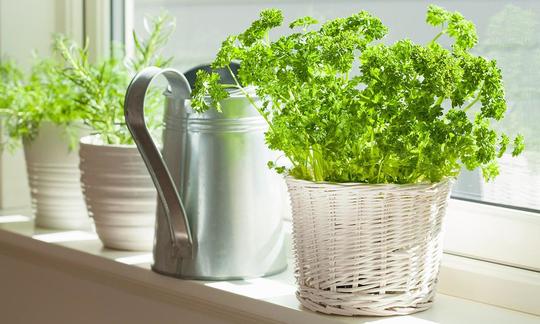

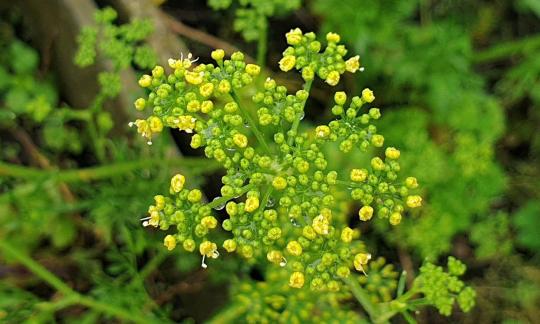

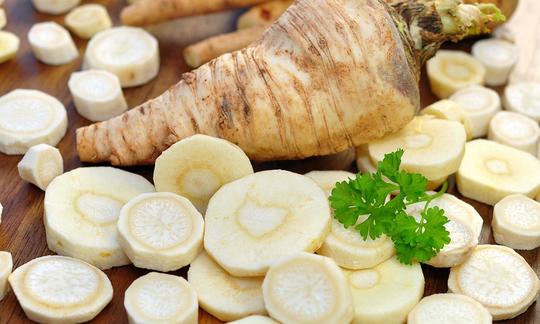

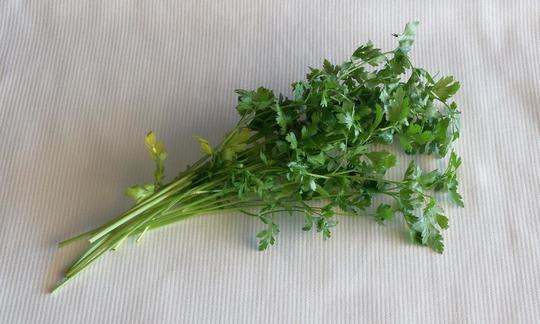

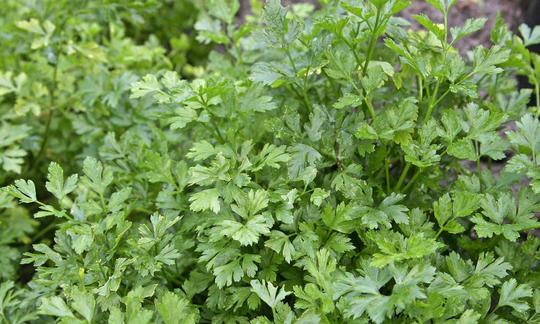

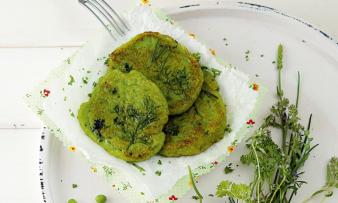
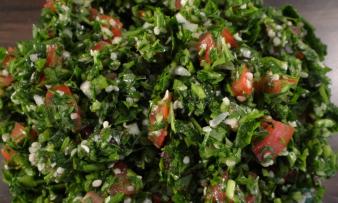
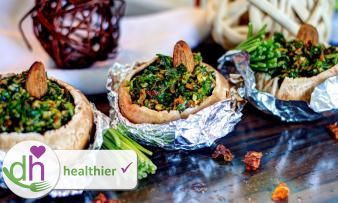

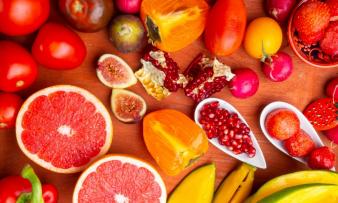



Comments